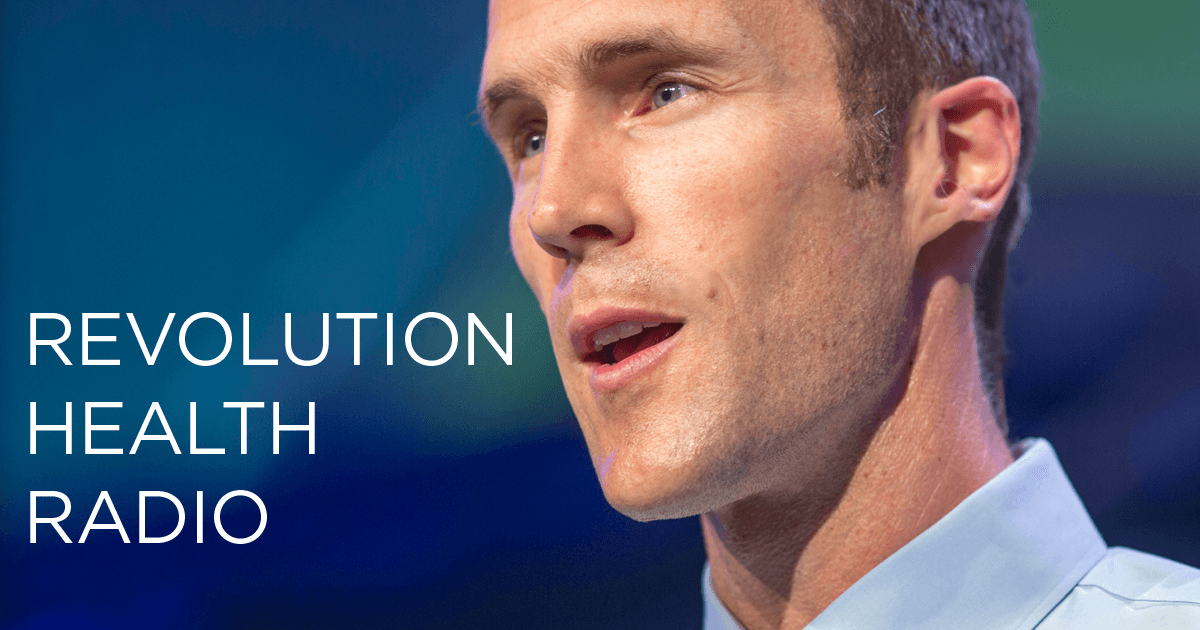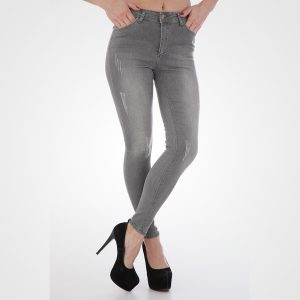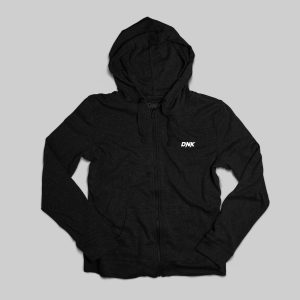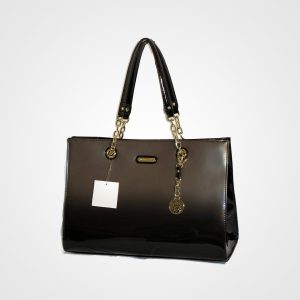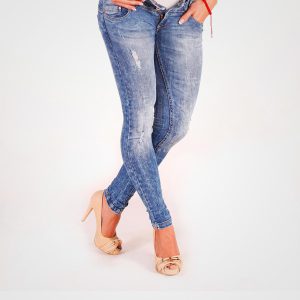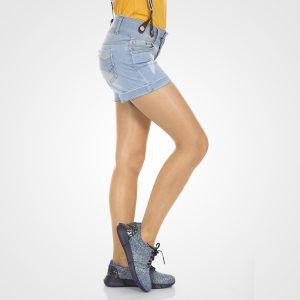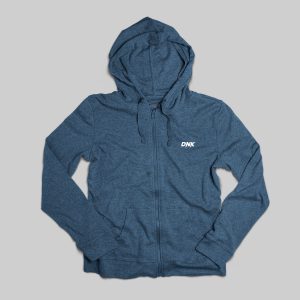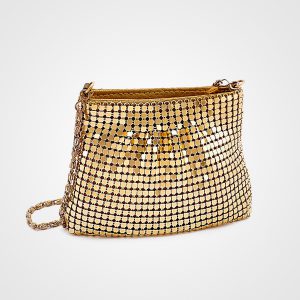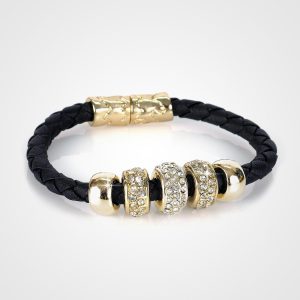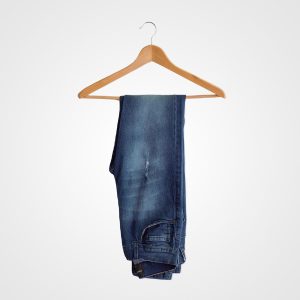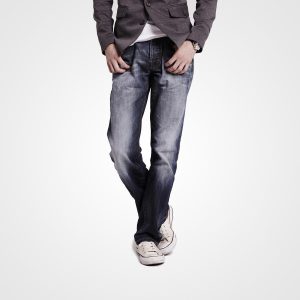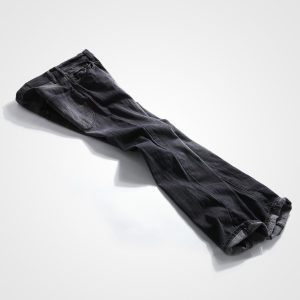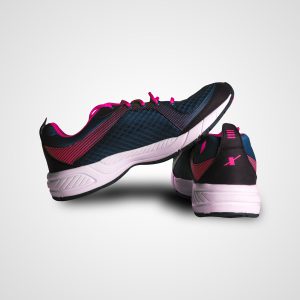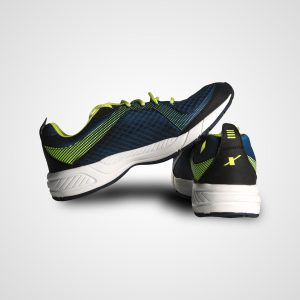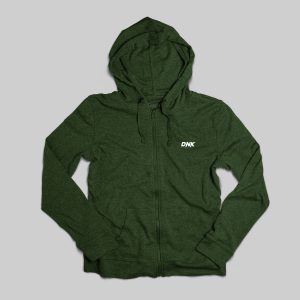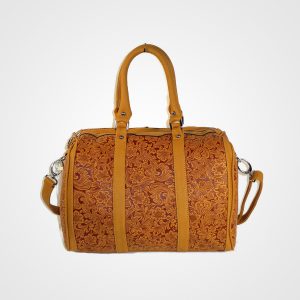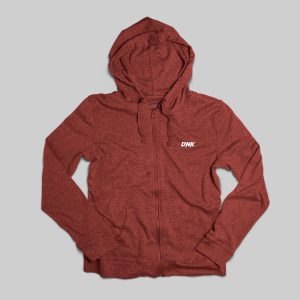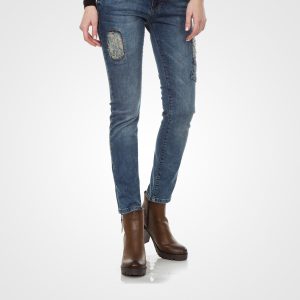In this episode, we discuss:
- The philosophy of conscious entrepreneurship
- Taking a healthier approach to dental care
- The importance of nature to physical and mental health
- Building resilience through nature and outdoor challenges
- The role of discomfort in health and growth
- Combating technology addiction and reclaiming human connection
Show notes:
Hey everyone, Chris Kresser here. Welcome to another episode of Revolution Health Radio. This week, I’m excited to welcome Seth Spears as my guest. This will be a different conversation than I typically have on the show. Seth is a business strategist for conscious, purpose-driven entrepreneurs who value mission over margin and purpose over profit. He is an avid outdoors person himself. He’s started several companies in the past, some of which are certified B Corps. They all have a social or environmental or health-related purpose and he is someone who thinks a lot about the intersection of health, wellness, both mental and physical health, investing, entrepreneurship, and self-improvement and personal development.
He’s the founder and chief visionary officer of Wellnesse and the founder of Rewild Gear, both of which we’ll talk about. I’ve had similar conversations in the past with people like Mark Sisson, and I, of course, have a similar background where I’ve tried to create value through businesses that make a contribution to health and wellness and really supporting people in becoming better versions of themselves. So I thought it’d be interesting to have Seth on and have a chat with him about this. I know many people in the audience are pursuing similar initiatives themselves, or maybe hope to at some point. So [I] hope you enjoy the conversation. Let’s dive in.
Chris Kresser: Seth, such a pleasure to have you on the show.
Seth Spears: Hi Chris, thanks for having me.
Chris Kresser: I’m excited for this conversation. It’s a little bit different than my typical conversation, but one that I enjoy and that I’ve had before with other health conscious and socially conscious entrepreneurs. Mark Sisson, the last episode we had, we talked about how he thinks about creating value through businesses that, first of all, provide people with cool products that they like and enjoy, but also that change the paradigm, that do things differently – whether that’s environmentally, or ecologically sustainable products that are actually contributing to health rather than detracting from it. I know this is something you think a lot about across your varied history in the business world and your more recent ventures with Wellnesse and Rewild. So maybe we can start there. Over the years, what is the philosophy that has evolved for you in terms of how you look at this?
The Philosophy of Conscious Entrepreneurship
Seth Spears: I’ve got a couple philosophies that I try to live by when it comes to both business and personally. One is be kind, be curious, have fun, and don’t waste. Those are kind of like my four pillars, or the ethos that I try to live by personally. In business, it’s always been quality over quantity, and then the keys to business success that I’ve found, or what’s worked for me, is just to do the right things, long enough, consistently. So I guess my overall ethos is a combination of all of those – of looking at business from a different lens, because it seems like today we’re very much in a space in this mass consumerist society we live [in where] we want things as cheap as possible. We’re a microwave society, and we want the thing right now and we’re addicted to cheap goods. But I’ve always looked at it [as], I’d rather pay more for something that’s better and it’s going to last, and not something that’s cheap or made from plastic or that’s come from China or whatever. I’d rather buy once and cry once than buy multiple times at a lesser price point but it’s more hassle. So I kind of look at everything that I’ve gone into, business-wise, as how can we focus on the quality side of it and not just sell as much as possible or not create as much as possible, but create really high-quality goods or services that I can be proud about? [Products] that I can look back on and say, “Hey, I did that,” and really be very happy that I put my name behind it.
Chris Kresser: Let’s talk a little bit about Wellnesse as an example of that. There are other factors here, which is something you’ve, I think, all the way back with Wellness Mama and your involvement there and a lot of the content that you guys put out [that] disrupted some of the mainstream paradigms on how to look at certain topics. And I can relate to that, of course, myself. In many cases, the mainstream paradigms are outdated and not supported by the current evidence. And one of those areas that seemed particularly ripe for disruption and innovation was oral care. It seemed like there was progress in a lot of other areas of functional wellness and health, but oral care and dentistry always struck me as something that was a little bit stuck in the stone age, or at least 30 [or] 40 years out of date with what the research was showing. So maybe tell people what Wellnesse is first of all, and then what led you to start that brand?
Seth Spears: Sure. Wellnesse is a B Corporation-certified brand of all natural personal care products, primarily oral care. We also have hair and skin care, but over 80 percent of our business is in the oral care space. When we decided that we were going to launch a personal care brand, we were looking at different industries where it seemed like no matter how health conscious someone was, they were still buying the conventional
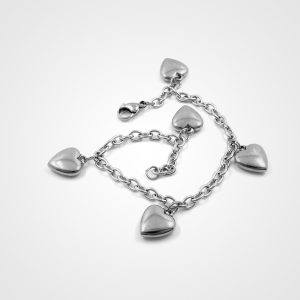
Anchor Bracelet
$150.00 – $180.00|
Black Brown Red |
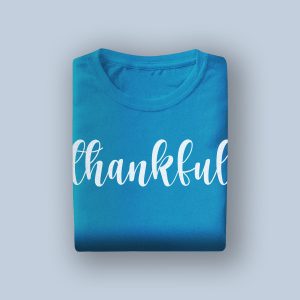
Blue Tshirt
$40.00 – $46.00|
Aqua Blue Green Red |
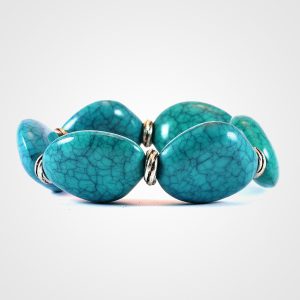
Boho Bangle Bracelet
$150.00 – $170.00|
Aqua Green Red |
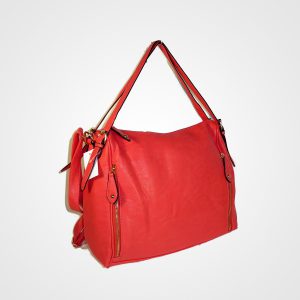
Bright Red Bag
$100.00 – $140.00|
Blue Orange Purple Red |
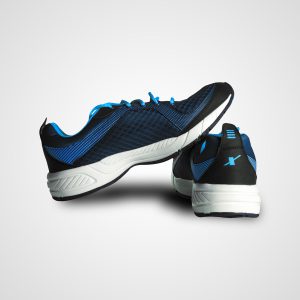
DNK Black Shoes
$175.00 – $200.00|
Aqua Blue Green Red |
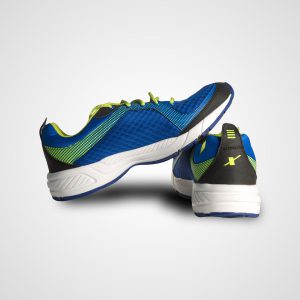
DNK Blue Shoes
$200.00 – $240.00|
Blue Green Red |
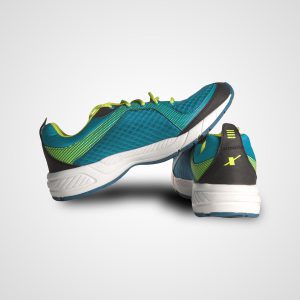
DNK Green Shoes
$250.00 – $290.00|
Aqua Blue Green Red |
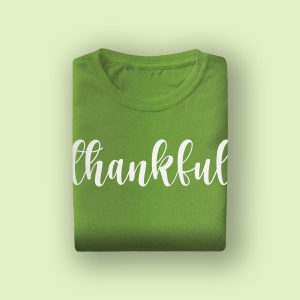
DNK Green Tshirt
$40.00 – $45.00|
Aqua Blue Green Orange |
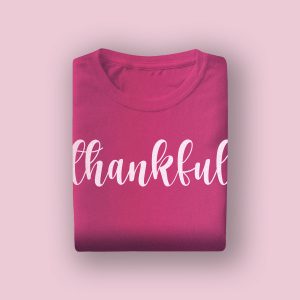
Flamingo Tshirt
$25.00 – $28.00|
Blue Orange Purple Yellow |
|
L M XL |
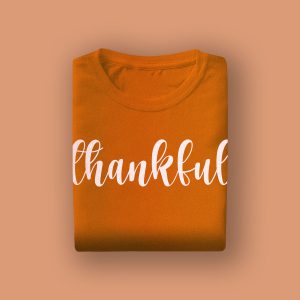
Gray Pattern Tshirt
$30.00 – $34.00|
Aqua Blue Green Orange Purple |
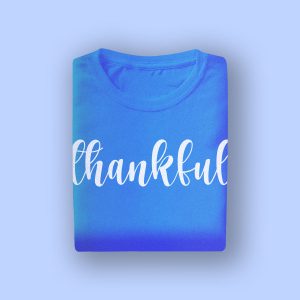
Lemons Tshirt
$25.00 – $28.00|
Blue Green |
|
L M |
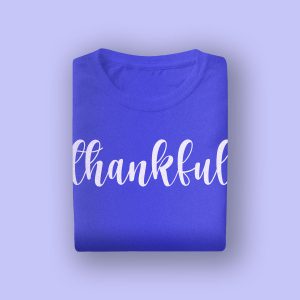
Purple Tshirt
$25.00 – $27.00|
Blue Green Orange |
I was the co-founder of WellnessMama.com, which became the largest health and wellness website and podcast for moms and was primarily an educational site – content, education, [and] information on how to improve your health naturally. We had tutorials on how to make your own personal care products. The audience really liked those products, but they got tired of making it themselves. So when you hear the same request over and over, [to] make these and sell [them], you realize that’s probably a good business opportunity. But that happened with quite a few different products, including different recipes and tutorials and such. So we started looking at where there was demand, but then also, where was there an opportunity? No matter how health conscious somebody is, what are those things that they’re still hesitant to change? And primarily it was your toothpaste, your deodorant, your shampoo and conditioner. Because often it’s just a matter of habit. I’ve done a couple informal polls with friends and other people who aren’t necessarily so health conscious, some that are, just asking them how they decide what products they’re going to buy when it comes to their personal care products. And it was almost unanimous – whatever my parent bought when I was a kid, whatever my wife [or] my spouse would buy, or whatever’s on sale. There was just a lack of thought, of thinking about, “What are these things that we’re using?” As you’re aware, when people go down a more natural, holistic health journey, they start looking at the food they eat. Typically, that’s kind of where it starts. And then there’s supplementation and how they’re living and things like that. But for whatever reason, the products that we’re putting on our body and in our body multiple times a day, it hasn’t gained quite as much traction or attention as some of these other things like our food and stuff. I don’t know why that is. I think it’s just a force of habit, maybe. But I think we’re starting to change, which is great.
Chris Kresser: Yeah, that’s amazing. And it is really interesting. I found this to be true in working with patients and just talking to people and hearing from people over the years, that there’s some areas where people are really willing to make changes pretty easily and quickly, and then there are other areas [where] it takes longer, or you see more resistance. And I did see something similar with oral care and personal care products. People would be eating really healthy diets and then just putting the craziest chemicals on their skin. I would have to explain to them that, actually, the digestive system has more defenses against toxins than the skin does. Because, from an evolutionary perspective, sometimes we would eat things that were poisonous and so the gut evolved a pretty sophisticated mechanism for keeping toxins out, but there was no historical precedent for toxins getting on our skin. Our skin didn’t evolve those defense mechanisms, nor did our mouth in that way. And so it takes people a while for that to sink in, I think.
Seth Spears: When you would bring that up to patients and people that you were working with, what did they say? How did they justify the toxic chemicals and things that they were using compared to their food or other things?
Chris Kresser: That’s a good question. I think it was a mix of lack of awareness in general [and] just not having thought about it. Like you said, they were defaulting to a habitual purchase process because their mom bought that toothpaste or their friends or whatever. But then I also think it was not really understanding how important it was and not understanding that connection that I just mentioned, where the skin is a very permeable barrier and whatever you put on your skin can get absorbed into your body quite easily. I genuinely think a lot of people had never thought about that, because when you touch the skin, it feels solid, right? It feels like it’s a barrier and whatever you put on your skin is not necessarily going to get in your body. So just educating them about that was super helpful.
I think it’s an area where more people are starting to pay attention, and I often refer people to Wellnesse because it’s a great product. It’s one that we use ourselves. And I think once that switch flips in their brain, it’s then pretty easy for people to stick with that.
Seth Spears: I agree. It just takes a little time to get there. And I think once you start lifting Pandora’s box off to question all the things that we do, the foods that we’re putting in our mouth, the products that we’re putting on our skin, you can’t unsee it once you’ve gone down that path.
Chris Kresser: Right. What’s been your experience with that so far, in terms of the brand? Do people notice a difference and appreciate that, or is it something that they’re doing more just because they now understand that they should and it’s a healthier choice?
Seth Spears: We do get a combination of both. I mean, obviously, once someone goes down the natural health path, they start looking at everything – all the ingredients that are in their products that they’re using and consuming every day. But we have hundreds and hundreds of testimonials of people who have started using our toothpaste and our oral care line that heavily mineralize their cavities. They’ve had a mouthful of cavities and gone back to the dentist and they no longer do, because the active ingredient in our toothpaste is micro hydroxyapatite, which your teeth [and] your bones are made of. And it’s a naturally occurring mineral, so it’s way better for you than fluoride, which is not naturally occurring in the same way. So we’ve had tremendous success with so many of our customers who have reported back [that] they have whiter teeth, [and] they have less soft spots and cavities.
We work with a lot of holistic and biological dentists because they’re [at] the forefront of the oral care world, and especially, like you mentioned before, there had not been a lot of updates or changes in the oral care space. But those in the more holistic and biological side, they’re at the forefront of it, looking at the science, looking at the new, emerging research, and what ingredients are good to use and which are not. Because of that, we’ve had tremendous success with those customers that have made the switch over to our all natural toothpaste.
Taking a Healthier Approach to Dental Care
Chris Kresser: In the Wellness Mama days, I remember articles about the importance of a nutrient-dense diet for dental health and oral health. Of course, that’s just as true now as it was then. There’s two sides of that equation – what you’re eating and how that contributes to your oral health. And, of course, other health factors, [like] reducing inflammation and microbiome. We know of the connection between the oral microbiome, the gut microbiome, etc. So how do you balance that in your discussions of oral care products, versus the foundational stuff that people need to be doing?
Seth Spears: What I tell people is that, no matter how good your oral care regimen is, the ingredients you’re using are cleaner. You’re brushing three times a day, you’re flossing or water picking, that’s great, but if you’re not eating healthy, if you’re still eating sugar-laden foods and sodas and high carbs, it’s not going to help that much because it’s so interrelated–your diet and how that affects your whole person, your whole being, your microbiome, your oral [health], your entire mouth. Dr. Weston A. Price, I mean, that was his whole philosophy and everything that he wrote about. He was a dentist, and talked about how we eat, how that affects everything. It affects our oral care and the amount of cavities that we have. So again, improving the products that you’re using, that’s great, but it’s got to start with what you’re eating [and] what you’re consuming, because it’s going from the inside out. So I like to have that conversation with people. But we live in, like we’ve mentioned before, such a microwave society. We want the easy fix, and often we don’t want to change those habits that are the ones creating the issue in the first place.
Chris Kresser: Absolutely. And what does that look like? Do you guys do any kind of education with your customer base around that stuff, or are you mostly focused on just the oral care application?
Seth Spears: We do both. We actually have a dental advisory board [of] multiple different holistic and biological dentists that we work with, who help us in some content creation and showing some of the research for our customers, for those on our email list, [and] for social media. And then, in turn, we make recommendations for our customers who are looking for a dentist who thinks this way. Because as people get turned on to how important this is, the more traditional American Dental Association dentist [is] not looking at it like that. They’re still recommending Crest and Colgate and the traditional stuff and fluoride treatments and all of this. They’re just not thinking about it in a holistic manner. So in working with those dental partners, it’s been a fantastic way for us to get new customers, for them to get new patients, and to educate them on how important all of these things are.
One of the statistics that I find absolutely fascinating is that if your mouth maintains a pH of 6.8 or higher, you can’t get cavities. The microbiome in the mouth, from your saliva and everything, helps protect it. It creates a membrane, and it [prevents] those cavities from forming. But just brushing your teeth is not going to do that, and trying to maintain that is challenging, especially with all the processed foods and everything that we eat today. So it’s a balancing act [of] trying to keep it there.
The Importance of Nature to Physical and Mental Health
Chris Kresser: Absolutely. Let’s talk a little about a completely different niche, which is Rewild, an outdoor industry. We know now that there’s a lot of research on the importance of spending time outdoors to physical health and mental health. [I’m] curious to hear more about how you made that jump. I know from knowing you personally for a long time that you’ve been an outdoorsman and are an avid outdoor person, just like I am, so [I’m] curious [about] how you brought that together.
Seth Spears: Nature has always been my happy place. One of my favorite activities in the world is camping– just getting away from the rat race, getting away from the day-to-day grind of the default world, and just reconnecting with our natural world. Ever since I was a kid, I loved being out in the woods, whether that was going for a hike or going hunting or skiing or just being out in nature. Several years ago, probably like 15 years ago now, my brothers and I were sitting around a campfire drinking bourbon and comparing knives. I grew up in a big family of six kids, five boys and one girl, and we all just loved the wilderness. So we’re sitting around a campfire comparing knives, and who makes the best knife, or what do you like about this one? What do you like about that one? What do you [not] like? If you were going to make your own, what would it look like? How would you design it? And so we kind of had this idea in the back of our minds of, what if we created a knife company? Fast forward a few years, around COVID and all the lockdowns, I realized that the one thing people could still do was get outside in nature, because they’re social distancing. You’re out going for a hike or hunting or camping, and you’re away from people or just with family or friends. I was like, “Hey, maybe there’s an opportunity where we could launch this now.” So we started Rewild Gear mainly to focus on camping, hunting, and backpacking, those particular niches, and just to scratch our own itch of creating really high quality and minimalistic products for doing the activities that we love.
But the mission really is to get people, and men specifically, back into nature, back into the wilderness, to reconnect with the wilderness, with family, with friends. Because as men, we have it tough today. We’re maligned in a lot of ways, and there’s a lot of pressure in our day-to-day life. It’s my belief that we can find our soul again, get back to our very primitive and more tribal roots and who we are – that wild, fierce man that everyone needs, that is going to make the world a better place, that’s going to focus on quality over quantity and protecting those that are vulnerable. But the only way we can do that is by reconnecting with that very natural wilderness environment so when we come back into the default world, we’re better husbands and fathers and business owners and employees. So the mission is to get people to spend more time and reconnect with the wild, because we’re losing a lot of those wild places and wild spaces, and we can’t protect what we don’t love or understand.
Chris Kresser: Absolutely. I know you mentioned camping, but I know you’re also a hunter. And what are some of your favorite ways of getting out there?
Seth Spears: I love hunting. It’’s the most primal thing you can do, really being in touch with our food supply. It’s very easy to go to Whole Foods or Kroger or wherever and just buy a steak, but it’s something else entirely when you’re out in the forests or in the mountains and you’re hunting a deer or an elk, and you harvest that and you see exactly where it comes from, and you’re taking a life and realizing that this life is to continue your own. You’re bringing food back for your family, and you’re utilizing every part of that animal as much as you possibly can. So that’s definitely one of my favorites. I love backpacking. I love camping. Extended time spent in nature is so important and I feel like in this very technological age that we live in, we don’t do enough of that. We’re inundated with technology from the moment we wake up to the moment we go to sleep. All the blue light and the EMFs and everything else. So disconnecting and resetting our circadian rhythm is so important, just from a health perspective. I feel like we don’t do enough of that. So anytime I can get out there and be in the backcountry, it’s a good day.
Chris Kresser: Yeah, I’ve seen studies, I’m sure you have as well, showing that even just a few days of camping [and] being outdoors can completely reset circadian rhythm if it’s disrupted. I’ve also seen studies of kids who are struggling with pretty intense behavioral and mental health conditions that spend a few days in nature and have a pretty transformative and even lasting experience. I think it’s especially true now with screens and addiction to screens that we see in both kids and adults, just the ability to unplug from that because a lot of backcountry environments thankfully, at least for now, don’t have that, you don’t have access.
Seth Spears: With Starlink now that’s probably going-
Chris Kresser: Going to change that. Yeah, I understand the benefit of Starlink, but I’m genuinely scared about the impact that’s going to have – that I’ll be camping in the backcountry and someone will be watching Netflix on their iPad not too far away, and I’ll hear that. But this is an opportunity that we have, at least for now, to really detach from the influence of these devices. And I know you’ve looked into this research. What have you seen are the biggest benefits for kids and adults?
Building Resilience Through Nature and Outdoor Challenges
Seth Spears: Yeah. An example I’ll give [is that] I think kids don’t do hard things anymore. I know you’re a parent, as am I, and creating resilience in your children is so important. And I think when you travel or when you have extended time spent in nature, there’s going to be things that come up, whether it’s the weather, maybe you’re getting bit by bugs, or it gets cold or it’s hot, or you lost something or forgot something. An extended camping trip can help build resilience, because you’re sleeping in a tent, you’re on the ground, and you don’t have those normal creature comforts. Hedonic adaptation is such a thing, where we get accustomed to these normal everyday comforts, where it’s perfectly 72 degrees in our home because of heating and air conditioning, but we’re not building that resilience muscle. So I think the more that we can do that, the more we appreciate those comforts.
I had an experience a couple weeks ago. I know you’re a big skier, Chris, and I had my kids out skiing here in Colorado. My younger daughter hadn’t skied in a couple years, and she didn’t want to do ski school. I’m like, “I think you should.” She’s like, “No, I don’t want to.” I’m like, “Okay, well, this is your decision, but then you have to keep up.” And so she was struggling. She’s 11 and she hadn’t skied in several years, and so some of the basic turns and stuff she was having trouble remembering. I was just encouraging of her and like, “Listen, okay, you made a decision and there’s consequences to those actions. And yes, it’s hard, but I believe in you, and if you just follow me, turn, do your S-curve turn, I’m not going to let you go too fast or get out of control. We’re going to stay on the smaller slopes and everything.” And she cried, she complained, but I wouldn’t let her quit. I’m like, “Look, you made a decision. You wanted to do this trip, and you’re going to do it.” And then I could see it start to shift, and see it, watching that change within her where it went from hard, I hate this, to the confidence starting to build up, like, “Oh, I made that turn, oh, I made it down that hill. Oh, I’m keeping up. Oh, I’m almost as fast as my siblings.” Seeing that confidence build and that resilience from being in nature and overcoming those hard things, I think that’s so important, and we just don’t have enough [of that]. You’re not going to get that on an iPad. The more we can do that with our children and ourselves, the better we’re going to be.
Chris Kresser: Yeah, and then you have formal programs like Outward Bound and Knowles based on this idea that learning to survive in the outdoors builds confidence and leadership skills. People have different opinions about the methodology that they use. It’s a little bit of a tough love kind of approach, but a lot of people who’ve been through those programs have benefited tremendously.
Seth Spears: Yeah, I wish that I would have had the opportunity to go through one of those when I was younger, because just knowing my love for the outdoors, I think I would have eaten it up. And maybe that would have changed the trajectory of things that I would have done. Who knows? But I think it would have been a great experience all around.
The Role of Discomfort in Health and Growth
Chris Kresser: Absolutely. And I think what you said is so important about comfort and how, in many ways, our whole society is oriented around the pursuit of comfort and how that doesn’t serve us. We’re seeing a bit of a change now in terms of interventions like sauna and cold plunge, for example. Those are definitely not comfortable if you’re pursuing them at an intense level. It’s not that comfortable. They get into an ice bath that’s 36 degrees, but people are doing it because, number one, they hear about the research, but number two, they feel, subjectively, the benefit that comes from being uncomfortable for a period of time. And the hormetic response, as you pointed out, that the body engages in, in reaction to that discomfort. And you don’t have to have a cold plunge or a sauna, although it’s great if you can swing that.
As an example, sometimes I go skiing and I just wear one less layer than I would based on the temperature. I think, “Okay, I’m just going to be cold today for a few hours.” Or [when] surfing, I used to do that as well. There was a study that just came out, showing that exposure to water that was 57 degrees for an hour led to all these incredible benefits. And that’s not really even technically a cold plunge. Fifty-seven degrees is not like an ice bath, but it’s certainly a lot colder than your body temperature. So just swimming in water, for example, that’s a little bit colder than normal, which you would do if you were surfing, can be really beneficial.
Seth Spears: I remember reading a study about Michael Phelps. When he would train he intentionally had the pool temperature, I think it was 10 degrees colder than a lot of others. [I] can’t remember the exact temperature, but he said that really helped him push through and was motivation to swim faster, because he wanted to get done quicker with his workouts. So I think there’s definitely something to that. Like you, I’m a huge fan of sauna and cold plunge and it’s one of my daily routines when I have access to it. I split time between Colorado and Florida, and in my house in Florida, I have a sauna and cold plunge in my backyard and I use that every day. In Colorado I don’t have one as readily accessible, but whenever I do, it’s a mental health game changer. I find that it puts me in a better emotional state. I’m more positive, and just doing circuits back and forth, it’s so beneficial for that.
Chris Kresser: Absolutely, I feel the same way. I’ve told people for years that it’s one of the most significant interventions that you can do, in terms of both objective and subjective benefits. If you look at some of the studies on regular sauna use, the reduction in cardiovascular disease risk is insane. It’s way, way more than almost anything [else] that we know about. If you get in the habit of doing sauna and cold plunge every morning, it’s better than coffee, a lot of people will say. It has a more lasting effect, and probably improves your sleep rather than making it worse for many people. I have a near-infrared sauna, which is great. I think the optimal for doing cold plunge/sauna circuits for me is a dry sauna that can get really hot, like up to 180 or 200 [degrees]. We don’t have the space for that in our current place, but even with the near-infrared sauna, I can get that internal body temperature really ramped up and do a cold plunge after that. That’s pretty good for me on a regular day. I don’t need to do more than that. But if I have the time and the setup, it’s great to do multiple circuits of going back and forth. You need that hot sauna to warm back up after the cold plunge.
Seth Spears: Yeah, totally. Do you end on sauna or cold?
Chris Kresser: Cold usually.
Seth Spears: I typically do as well, unless I did a hard workout or something. I’ve also found that if I’m doing it at night, I tend to sleep better or my HRV tends to improve if I end on hot as opposed to cold.
Chris Kresser talks with Seth Spears about building purpose-driven businesses, disrupting personal care, reconnecting with nature, and raising resilient, healthy kids in a digital world. #RHR #ChrisKresser #Parenting #Nature
Chris Kresser: Interesting. I’ll often take a hot shower after that so I get a little heat exposure after the cold, especially if I’m doing it in the morning. I like the invigorating ending with the cold.
Combating Tech Addiction and Reclaiming Human Connection
Chris Kresser: What other benefits [are there] in terms of spending time outdoors? We’ve talked about building resilience. I think there’s a lot of research on relieving depression. And I’ve definitely heard from patients and people I’ve worked with about that as well.
Seth Spears: Yeah, I’ve read some of those studies also. As connected as we are as a society because of social media and technology and phones and text messaging and everything else, we feel more disconnected. We’ve lost that in-person, one-to-one exchange of being in the presence of another. So whenever you can get into nature and disconnect from your phone or from those devices, whether that’s because you’re out of range or don’t have service or you’re intentionally shutting it off, the benefits are just amazing. Something I don’t know that a lot of people realize is [that] the brain was originally designed as a sponge to soak up lots of information, and unfortunately because we’re inundated with so much technology it’s had to become a filter. So when we spend extended time in the backcountry, say camping under the stars or in a tent, and we’re disconnected from technology, I think it takes three nights or four nights, and when you come back your brain has actually reset and it’s become a sponge again.
That’s why if you’ve ever experienced this, [if] you’ve done a long backpacking trip or camping trip and then you come back and you’re almost in complete overwhelm, you don’t know what to do. You kind of have this freak out within your body, because your entire nervous system is down regulated because you don’t have all these stimuli constantly coming at you. When you get back into the default world, it’s like, “What’s going on?” There’s the TV on, there’s the radio, there’s cars, there’s noise nonstop, as opposed to that very calming, natural environment.
I don’t know how we change that as a whole, but I think the more time we can get back to our more natural state, that will help to regulate the nervous system in the body. It’s going to create less stress on us mentally [and] emotionally, and that’s going to help us in everything that we do in life.
Chris Kresser: Yeah, it’s something I think a lot about as a father. The current generation of kids is growing up with constant connectivity and very few moments where they are just alone with their thoughts and they don’t often have the opportunity to get bored. I think really good things happen when we get bored, once we get through the initial discomfort. That’s where a lot of creativity arises and our best ideas, innovation, etc. There’s so many stories. I’ve read a number of books on this topic, and they often will use examples like Watson and Crick. The discovery of DNA was, I can’t remember if it was maybe Francis Crick, he was on a long walk in the woods. He’d been working on this problem, nothing happened, [he’s] stuck and takes a really long walk in the woods and, boom, the answer comes to him. There’s so many stories like this, where people have gotten clarity or inspiration, [or] new ideas that have come to them when they have been in a place where they don’t have constant input coming into their brain.
I just saw a study that was published this week, or early last week maybe, or late last week. It was a randomized controlled trial and they recruited two groups of people. One group had normal phone use. The other group installed an app that blocked internet access and social media on their phone. Which is similar [to] an app [we use] called OurPact. Our daughter has a phone, but we have parental control so she doesn’t have access to the internet or social media. So I imagine it was something similar to that. But they could still text, they could still use maps, they could still use their calendar and maybe listen to music, I’m not sure. They saw absolutely profound improvements in mental health. They were superior to the effects of antidepressants. The people were healthier, they were happier, they were having conversations with their friends and interacting more with their family members, they were more present as parents. That is not surprising at all to me, but the question is what can we do at this point, because these technologies have become so ubiquitous and you really have to make a very conscious and concerted effort as an individual and as a parent to put boundaries and guardrails around them. And even when you do that, it’s still often a constant struggle. This is one of the things I think most about is [how] do we break free from this cycle? Because I think it’s really harming us.
Seth Spears: It is such a good question and I wish I had an answer for it. I even noticed it in my own life. When there’s nothing going on, I’ll just pick up my phone and start scrolling on Instagram or Facebook or TikTok or whatever. It’s so easy. The algorithms are designed to keep us addicted. They’re designed to keep us scrolling and looking through so we can have products sold to us or have our opinions of things change or positioned a certain way. And I mean, it’s not like it’s all good or all bad. It’s a lot of gray area, because technology has vastly improved our lives. But again, there’s always a downside. There’s a flip side to everything. Like with AI. I’m way deep in AI right now and utilizing it as a therapist and using ChatGPT and telling my life story and having it spot patterns in myself that I’m missing, whether that is my interpersonal life or as a father or as a business owner. That’s a great tool that we can use, but then it’s easy just to fall into that and use it all the time as opposed to actually going and talking to someone.
So there’s pros and cons to both. But to your question, how do we put in those safeguards? I wish I knew, and especially when it comes to kids because as a father we want to protect them. We want to give them the very best and have them utilize technology because we don’t want to be a luddite and say, “Throw all technology away, it’s bad for you,” but the whole world is going to use it and then that doesn’t work either. I think it is having conversations with them and explaining, “Hey this is what this does to your brain.” It’s all about having balance and maybe putting the phone on gray screen as opposed to the vibrant colors, which will help change the circuitry so it doesn’t feel quite so addictive. Maybe setting time limits and things like that. I think it’s going to be different for different people [based] on how they’re wired and what their own motivations are.
Like what you’re reading? Get my free newsletter, recipes, eBooks, product recommendations, and more!
Chris Kresser: Yeah, for us it’s been a combination of all those things. Our daughter’s almost 14 now. When she was younger, it was much easier. There was just [a] complete absence. She didn’t have any devices. I think when it’s black-or-white like that, it’s easier to enforce or hold those boundaries. Because my belief is that a four-year-old doesn’t need to gain experience in the digital world. They’ll have plenty of time in their life to learn how to use technology. Anyone who has kids knows they learn it very quickly. My daughter is already far more sophisticated in her digital technology use than my wife, for example. So I’m not worried about that. I know they’ll pick it up quickly. But I think going back to the topic of this show, or one of them, is one of the best things we can do is actually give our kids an experience of what it’s like to be off the grid.
One of the things we do as a family every year is we take a multi-day river rafting trip. They could be four [or] five nights, and they’re usually in very deep wilderness environments. We’ve done the Salmon River, we’ve done the Green River in Utah, the Yampa, the Rogue, several other rivers, and they’re all way off the grid. Again, for now, there is no way to connect to the internet. It’s kind of a village-like environment. You’re rafting in the day, floating down the river on a paddle board and kayak. You’re with a group of people that you didn’t know, usually, to start, but you get to know each other. And then you’re cooking on the side of the river, you set up camp, play games, hang out. It’s a quality of spending time together with other people that is so rare now in this environment. And usually by the end of the trip, the kids are super bonded and close, they’re having a great time. I’ll never forget, after one of the trips a couple years ago, my daughter said, “Dad, I don’t want to leave the river.” And I was just like, “Mission accomplished.” This is it. She felt that experience deeply of what it’s like to be so connected to herself, connected to nature, and connected to the people around her. As alluring as all of the devices are, she got on a visceral, sensory level that that was something she wanted more of. That quality of connection was way better than what she gets on a device. So I think exposing our kids to that is maybe one of the best things that we can do as parents.
Seth Spears: Yeah, it’s so important. I think it’s great that you and your wife are on the same page as far as that goes. I’m divorced now and that’s been a little bit of a challenge in trying to be on the same page when it comes to access to devices and how much and enforcing going on different trips and things like that where I think it would be to their benefit. There’s just a little bit of a different parental philosophy around some of this, so that can make it a bit more challenging at times. It’s been a balancing act of trying to lead by example and showing, “Hey, I love doing these things. You guys should come and let’s go spend time in nature or go camping and disconnect.”
I have six kids and my oldest is 18 and my youngest is 9. Two boys and four girls. And my two boys, I’ve taken them hunting every year since they were each five years old. Back in Kentucky where I’m from, I own property back there still and my brothers and I and our sons and our father would come out and do a hunting trip in November of every year. We’ve got a cabin out there and we’re all hunting and sitting around the campfire and grilling meat and just enjoying being in each other’s company. We have cell phone access, but we’re limiting it severely, really not on our phones and stuff that much. It’s more just being in nature, and it’s our favorite week of the year. I look forward to that more than Christmas every year and my boys do as well. I don’t do the same amount with the girls as with the boys because they’re the ones that tend to want to do it more, but I do take them out there some as well and try to encourage them to spend as much time in nature as possible because, to your point like in the whitewater rafting trip, the more time you can spend there just disconnecting is building that appreciation that they can take with them in everything that they do in life. When you plant those seeds early, whether that’s skiing or wakesurfing or hunting or rafting, that’s something they can use no matter what, and I think that’s going to lead [to] a better, more fulfilling life.
Chris Kresser: Absolutely, 100 percent. My daughter is a very passionate equestrian now. When we moved to Utah, I don’t know if I even told you this, she got really into riding horses and is now competing as an eventer, which is like stadium jumping, eventing, [and] cross-country dressage. So she spends a big chunk of her time outside riding horses, interacting, taking care of the horses, shoveling horse poop out of the stalls and cleaning the stalls, that kind of [stuff]. I’m so happy that she has gotten into this because I see so many of her peers, especially teenage girls, spending almost all their time inside on devices, on Instagram, TikTok, social media, and not having that connection, number one, with outdoors and outdoor environment, but number two, with a physical activity that is so health promoting. Again, every kid’s going to be different, of course. Not everyone’s going to be drawn to the outdoors to the same degree, or drawn to physical activities outside, but outdoor activities can be a great way of getting kids interested in nature. Maybe they might not enjoy camping, but maybe they might enjoy mountain biking or paddle boarding or something like that. So yeah, I think it’s a great way to give them a lifelong appreciation.
Seth Spears: Yeah, I totally agree. When I look back on my own life as a kid growing up, my favorite memory with my father was the first time he took me camping. I think I was seven years old and I was going to join Cub Scouts. They had a camping trip and stuff planned and he’s like, “Well, before you go camping with a group or with friends or whatever, I’m going to take you first.” My dad grew up out in the country and he was in the military and stuff, but he liked more of the creature comforts. I think because he grew up [with] kind of a harder life. They didn’t have indoor plumbing until he was in, I think, high school or college. They had an outhouse growing up in southeastern Kentucky. So [after] growing up that way, he could appreciate it, but didn’t want to do that. But he made that sacrifice, and I’m sure he hated the trip, but it’s still one of my favorite memories with him to this day. And I think that definitely instilled my love of camping and nature, being out there with him camping on a lake and fishing and cooking hot dogs over an open fire and marshmallows and all those little things. And my kids love that because I’ve instilled that in them from an early age as well. So I think planting those seeds from a very early age, whether that’s health, whether that’s the food we’re eating, whether that’s spending more time in nature, whether that’s doing harder things and creating that resilience muscle, I think that’s really important.
Chris Kresser: Absolutely. Well, Seth, I really enjoyed the conversation. Where can people find more about what you’re up to, Wellnesse, and Rewild?
Seth Spears: Thanks Chris. I’ve really enjoyed this too. My personal website is just SethSpears.com and I have everything linked there. I’m on Instagram at Spears Marketing and then Wellnesse.com and Rewildgear.com as well.
Chris Kresser: Awesome. Thanks again. Pleasure to talk to you. Let’s do it again soon.
Seth Spears: Yes indeed, have a great one.



